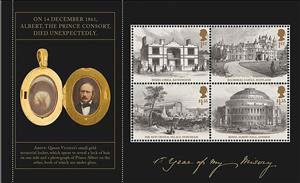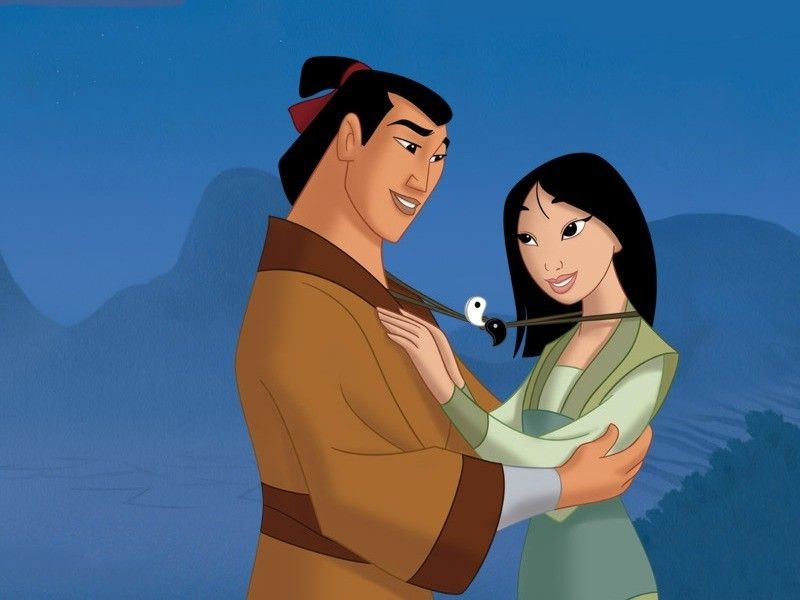Booklet Pane: Death Of Prince Albert (United Kingdom of Great Britain & Northern Ireland 2019)
Death Of Prince Albert (United Kingdom of Great Britain & Northern Ireland 2019)
24 May (United Kingdom of Great Britain & Northern Ireland ) within release Bicentenary of Birth of Queen Victoria (2019) goes into circulation Booklet Pane Death Of Prince Albert face value 4.44 British pound sterling
| Booklet Pane Death Of Prince Albert in catalogues | |
|---|---|
| Colnect codes: | Col: GB 2019-07BK3 |
Booklet Pane is square format.
Only available from Prestige BookletAlso in the issue Bicentenary of Birth of Queen Victoria (2019):
- Booklet Pane - Journal Entry For The Great Exposition face value 3.72;
- Stamp - Model Lodge, Kennington face value 1st;
- Stamp - Royal Albert Hall, London face value 1.55;
- Booklet Pane - Map Of British Empire in 1897 face value 2.69;
- Stamp - New Crystal Palace, Sydenham face value 1.55;
- Se-tenant - Bicentenary of Birth of Queen Victoria face value 2*1.60;
- Booklet - Bicentenary of Birth of Queen Victoria Prestige Booklet face value 15.40;
- Stamp - Marriage of Victoria and Prince Albert face value 1.60;
- Se-tenant - Bicentenary of Birth of Queen Victoria face value 2*1st;
- Souvenir Sheet - The Legacy of Prince Albert face value 4.44;
- Booklet Pane - Death Of Prince Albert face value 4.44;
- Booklet Pane - Long Live The Queen face value 4.55;
- Stamp - Queen Victoria in Robes of State face value 1.35;
- Se-tenant - Bicentenary of Birth of Queen Victoria face value 2*1.35;
- Stamp - Balmoral Castle face value 1st;
- Stamp - Victoria at Age Eleven face value 1.60;
- Stamp - Queen Victoria and Benjamin Disraeli face value 1st;
- Stamp - Queen Victoria with John Brown face value 1.35;
- Stamp - Queen Victoria in Later Years face value 1st;
Booklet Pane Death Of Prince Albert it reflects the thematic directions:
Architecture (Latin architectura, from the Greek ἀρχιτέκτων arkhitekton "architect", from ἀρχι- "chief" and τέκτων "builder") is both the process and the product of planning, designing, and constructing buildings and other physical structures. Architectural works, in the material form of buildings, are often perceived as cultural symbols and as works of art. Historical civilizations are often identified with their surviving architectural achievements.
A building or edifice is a structure with a roof and walls standing more or less permanently in one place, such as a house or factory. Buildings come in a variety of sizes, shapes and functions, and have been adapted throughout history for a wide number of factors, from building materials available, to weather conditions, to land prices, ground conditions, specific uses and aesthetic reasons. Buildings serve several needs of society – primarily as shelter from weather, security, living space, privacy, to store belongings, and to comfortably live and work. A building as a shelter represents a physical division of the human habitat (a place of comfort and safety) and the outside (a place that at times may be harsh and harmful).
A castle (from Latin: castellum) is a type of fortified structure built in Europe and the Middle East during the Middle Ages by European nobility. Scholars debate the scope of the word castle, but usually consider it to be the private fortified residence of a lord or noble. This is distinct from a palace, which is not fortified; from a fortress, which was not always a residence for nobility; and from a fortified settlement, which was a public defence – though there are many similarities among these types of construction. Usage of the term has varied over time and has been applied to structures as diverse as hill forts and country houses. Over the approximately 900 years that castles were built, they took on a great many forms with many different features, although some, such as curtain walls and arrowslits, were commonplace.
Famous People refers to the fame and public attention accorded by the mass media to individuals or groups or, occasionally, animals, but is usually applied to the persons or groups of people (celebrity couples, families, etc.) themselves who receive such a status of fame and attention. Celebrity status is often associated with wealth (commonly referred to as fame and fortune), while fame often provides opportunities to make money.
A head of state (or chief of state) is the public persona that officially represents the national unity and legitimacy of a sovereign state. In some countries, the head of state is a ceremonial figurehead with limited or no executive power, while in others, the head of state is also the head of government. In countries with parliamentary governments, the head of state is typically a ceremonial figurehead that does not actually guide day-to-day government activities and may not be empowered to exercise any kind of secular political authority (e.g., Queen Elizabeth II as Head of the Commonwealth). In countries where the head of state is also the head of government, the president serves as both a public figurehead and the actual highest ranking political leader who oversees the executive branch (e.g., the President of the United States).
A prince is a male ruler (ranked below a king, grand prince, and grand duke) or a male member of a monarch's or former monarch's family. Prince is also a title of nobility (often highest), often hereditary, in some European states. The female equivalent is a princess. The English word derives, via the French word prince, from the Latin noun prīnceps, from primus (first) and caput (head), meaning "the first, foremost, the chief, most distinguished, noble ruler, prince"
A Royalty is the immediate family of a king or queen regnant, and sometimes his or her extended family. The term imperial family appropriately describes the family of an emperor or empress, and the term papal family describes the family of a pope, while the terms baronial family, comital family, ducal family, grand ducal family, or princely family are more appropriate to describe the relatives of a reigning baron, count, duke, grand duke, or prince. However, in common parlance members of any family which reigns by hereditary right are often referred to as royalty or "royals." It is also customary in some circles to refer to the extended relations of a deposed monarch and his or her descendants as a royal family. A dynasty is sometimes referred to as "the House of ...". As of July 2013, there are 26 active sovereign monarchies in the world who rule or reign over 43 countries in all







